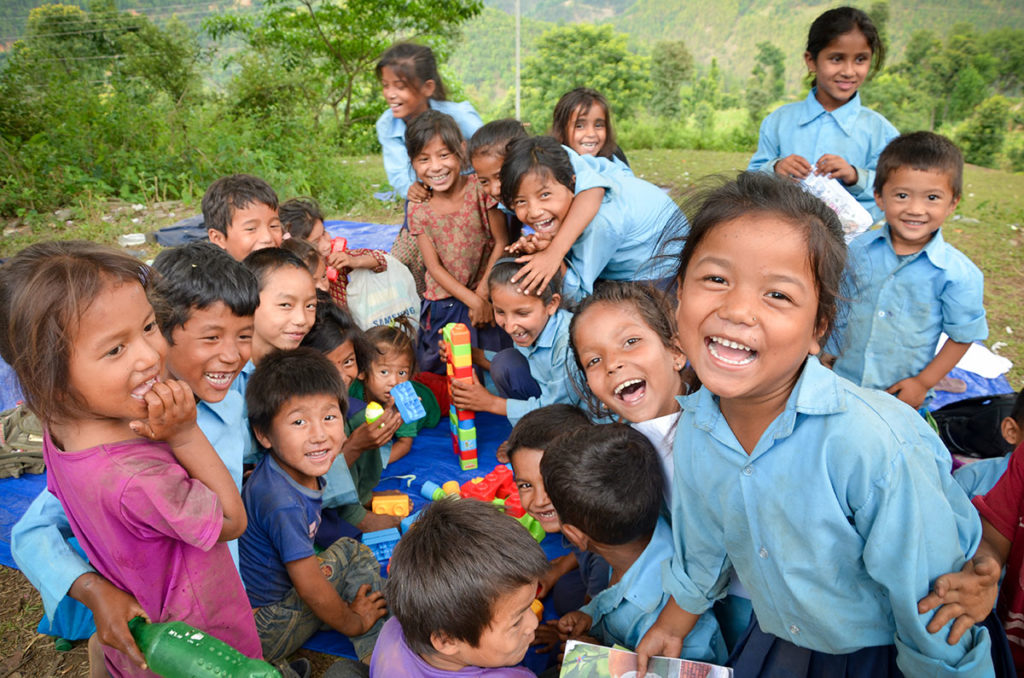
Take Action
You hold incredible influence. Harness it here to encourage your representatives to prioritize safety, health, and opportunity for every child. Pick an issue below and take action to help us achieve the following goals together.
SUPPORT U.S. FOREIGN ASSISTANCE
With the COVID-19 pandemic threatening progress in the fight against poverty, now is the time to speak out in support of foreign assistance and its life-saving programs. This small 1% of the U.S. budget saves lives.
END CHILD MARRIAGE
Each year, 12 million girls are married before the age of 18. That’s 22 girls every minute whose childhood, dreams, and education are cut short. It’s time to protect and empower girls everywhere.
PREVENT CHILD LABOR
Around the world, 152 million children are involved in child labor, including 73 million in hazardous forms of child labor in industries such as agriculture, mining, fishing, commercial sexual exploitation, and factories.
END VIOLENCE AGAINST CHILDREN
Violence against children, in all its forms, takes a disastrous toll on the physical, mental, and social development of the more than 1 billion children around the world who are affected. They deserve a real childhood.
KEEP GIRLS IN SCHOOL
Globally, 130 million girls are out of school. Child marriage, pregnancy, family pressures, violence, and poverty keep girls from reaching their potential.
STOP GENDER-BASED VIOLENCE IN EMERGENCIES
During emergencies like disasters, armed conflicts, and even pandemics, violence against women and girls rises dramatically.
PRAY FOR YOUR LEADERS
Senators and representatives have the hard job of balancing the competing interests of their constituents. Send a note of encouragement and prayer to your members of Congress today.
Protect Afghan Children
As Afghanistan faces an immediate crisis as well as the long-term challenges of COVID-19, drought, and conflict, children are continuing to lose access to food, protection, and shelter.
Mental Health Support for Children
Children today are experiencing increased loads of stress and anxiety - whether it stems from conflicts, violence in their communities, loss of a loved one, or living life on the move. Children need access to mental health support in the wake of the pandemic to enable them to thrive and reach their full potential.
Support Clean Water and Sanitation
An estimated 2 billion people lack access to improved sanitation facilities – that's more than 35% of the world’s population. Take action today to address this issue. Ask your Representative to join the International Water and Sanitation Caucus to ensure the U.S. plays its part in the global effort to achieve safe drinking water and sanitation, and to address the security impacts of water scarcity and management.

Global Goals for Sustainable Development
The ambition of the Sustainable Development Goals (SDGs) is staggering — or breathtaking, depending on your perspective! Learn more.
What are the Global Goals?
On September 25, 2015, 193 countries including the United States adopted a landmark and far-reaching agreement that would shape the direction of development for the next 15 years. These Global Goals, also referred to as the Sustainable Development Goals (SDGs), spell out the progress that must take place and the means of measuring it.
What will these goals accomplish?
- Eliminate extreme poverty by 2030
The World Bank defines “extreme poverty” as living on less than $1.90 a day — this often means going without adequate food and water, and lacking housing or shelter. This kind of crushing poverty can hinder opportunity and hope for those caught in it. The 193 nations agreed that for extreme poverty to end everywhere in the world in the next 15 years, we must all act in concert. - Leave no one behind
Measuring progress is often difficult, so the impulse is to go to accessible places where you can make changes and see results quickly. But this approach is no longer enough. The SDGs call us to go to the hard-to-reach places, like conflict zones, urban slums, and regions with poor governance. In such places, even small development gains are often not distributed equitably because of a lack of structure. The challenge in the next 15 years is to lift up the families traditionally left out of development plans — to focus on sustainable progress for the forgotten, the excluded, and the marginalized. - Secure peaceful lives, peaceful communities, and a peaceful world
The SDGs recognize that progress will always be somewhat constrained if parts of the global community are engaged in conflict, or are in constant upheaval. The Goals underscore the fact that peace is foundational for achieving equitable development and justice. Without peaceful communities and a peaceful world, we will only go part of the way to achieving what the SDGs aim to accomplish.


